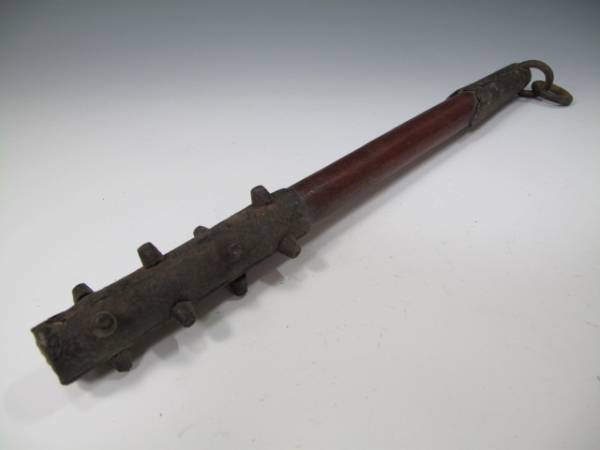
What is a Kanabo weapon?
The kanabo is a type of weapon that consists of a heavy, cylindrical club with spiked protrusions on the head and an attached handle. Kanabo and tetsubo are types of Japanese weapon that were used historically from around the 14th century.
Kanabo were originally made of hardwood of Japanese chestnut, yew, or oak and cut into block-shaped bars about 1-2 meters in length. They sometimes had steel iron nails implanted in them.
Tetsubo are round tempered steel clubs.
Tetsubo can be either reinforced with metal bands or wrapped around the handle with cloth.
The kanabo is related to the tetsubo, which is basically the same type of studded club but made completely of metal.
The weapon is made to be very heavy and has two points of contact on the hands holding it with the center being swung.
Unlike other pole-like weapons, this one does not have a blade on it but it is made of thick wood which makes it perfect for smashing or breaking through targets.
What is the kanabo weapon used for?
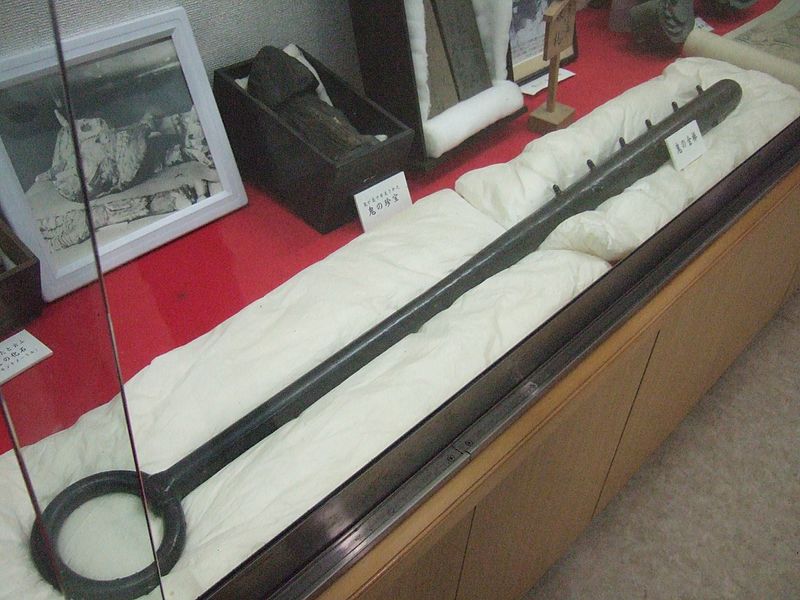
The kanabo is an iconic weapon in the samurai arsenal used for melee combat. It came to prominence in response to advances in Japanese armor that made it more difficult to cut a person with a blade.
Shock/Trauma blows
Japanese maces effectively circumvent this protection by being able to assert massive shock-trauma by sheer force of weight and inertia. Often they would be combined with other weapons that were able to more efficiently finish the foe off once they had been initially stopped in their tracks by the heavy kanabo stick.
A Kanabo is essentially a wooden club, similar to a baseball bat or mace, but can be styled with protrusions at the end of the handle to maximize the damage it can cause.
The kanabo can be used to strike multiple people at once and, when wielded by an experienced fighter, its blows can cause severe injury.
Breaking soldiers’ stances
A kanabo is a highly effective device for physically clearing a space or routing out an entrenched foe. The kanabo could even be used to clear away simple fortifications made of wood or bamboo.
Breaking armor
One of the main reasons for the rise of the kanabo was that it was capable of crushing the armor of opponents. Indeed, the rise of the popularity of the kanabo paralleled the rise in the use of more sophisticated armor.
Kanabo weapons also became a type of staff weapon that was used for martial arts and combat in feudal Japan. In feudal Japan, many villages had a forge where the blacksmith forged Japanese weapons, including the clubs, for the village.
Soldiers often used these deadly weapons to break through ceilings or walls during castle sieges.
Who historically used Kanabo and tetsubo Japanese weapons?

Many Japanese people of the samurai warrior class used kanabo and tetsubo as weapons, especially from the 14th century.
Samurai warriors were expected to be able to use these weapons, even on horseback. Hands-on training with either weapon was given to young samurai warriors, and they were expected to know how to fight with the weapons before wearing armor for protection.
The longer model kanabo were used by soldiers on horseback and by cavalry. It has been suggested that they could have been particularly effective in mounted combat as an expertly wielded kanabo would be capable of breaking a horse’s legs.
Kanabo and Tetsubo were often used as a weapon during warring periods throughout Japanese history to crush enemies by sheer force.
The martial arts that originated in Japan have very complex and diverse origins. The practice of martial arts and the use of weapons became widespread among the samurai class, and Kanabo and tetsubo were just a couple of the diverse weaponry found in the hands of those who practiced bushido, the Way of the Warrior.
Famous warriors who have been noted to use Kanabo include:
- Akiyama Mitsumasa (秋山光政)
- Shinozuka Shigehiro (篠塚重広)
- Kojima Yatarou (小島 弥太郎)
- Mogami Yoshiaki (最上義光)
Various types of kanabo weapons
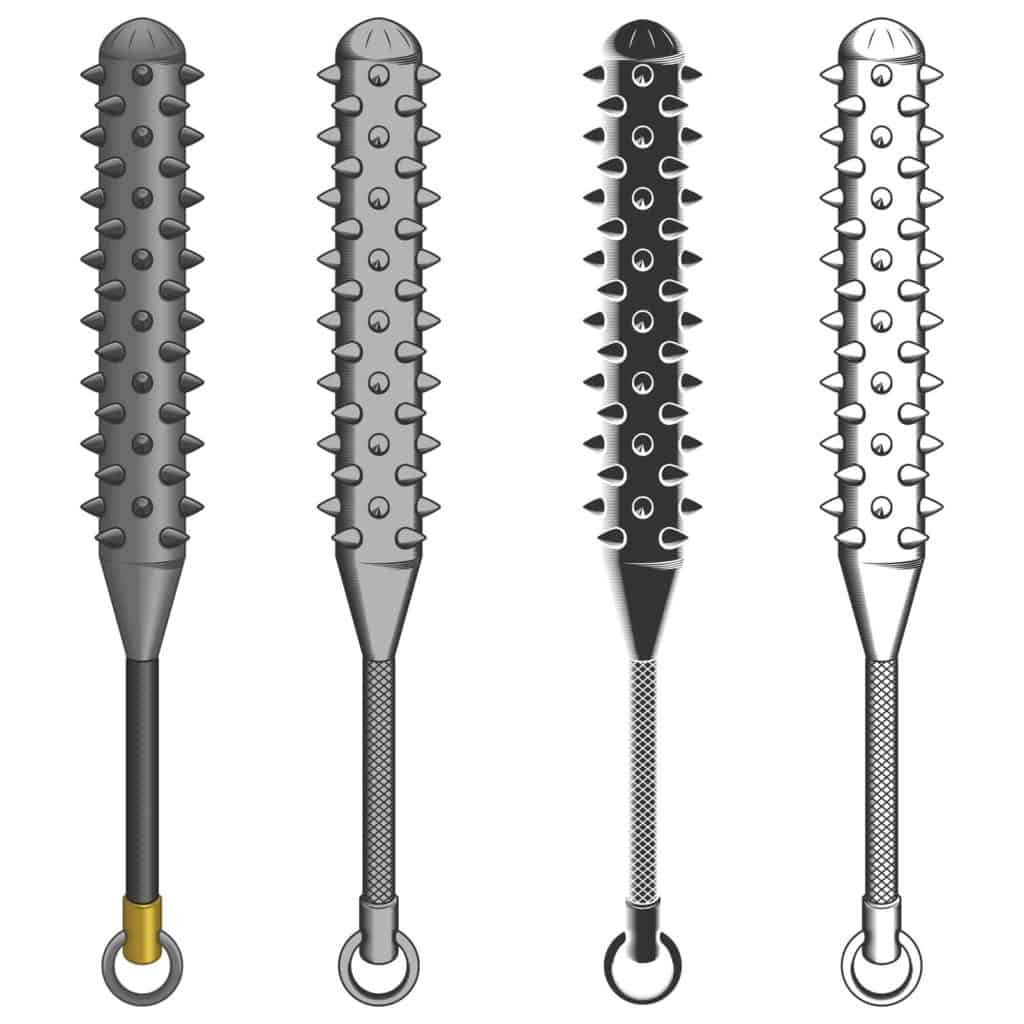
There are many types of kanabo. Some sport a spiked metal ball on the ring and others sport barbed wire around the ring.
Kanabos can be of various lengths and weights. They tended to vary a lot in size from anywhere between half to two meters in length.
Obviously, the larger the kanabo, the more they can be used in battle to inflict damage on an opponent.
Typically, the more weight a kanabo has, the more lethal it will be.
Kanabo vs. Mace
In contrast to some other mace-like weapons, the kanabo is generally not weighted in one particular point. They rather spread out the weight across the stick. This has advantages and disadvantages. The advantages are that you can be less precise in your striking and still be assured that you are going to great damage.
The disadvantage of a more evenly weighted weapon is that it is not as easy to deliver a single decisive blow. The kanabo is more orientated towards lower risk, lower reward than an all-or-nothing weighted mace.
Different types of Kanabo include:
Tetsubo

An all-metal version of the kanabo. “Tetsu” means metal and “bo” means stick.
Ararebo

These are shorter, one handed versions of the kanabo. Being shorter, they were able to be used in a more fluid, dextrous way. They were generally not as popular as the longer versions as they lacked the sheer power to pack a massive punch.
Kanemuchi or aribo
These were more plain, unstudded or spiked club-like sticks with little tapering.
Spikes Vs. Studs
Throughout history, there have been some kanabo with more blunt studs, and some with aggressive spikes.
Although you would initially think that a spike would always win out against a stud, this was not always the case when you consider that spikes can easily get lodged in things – especially armour.
History of Kanabo weapons
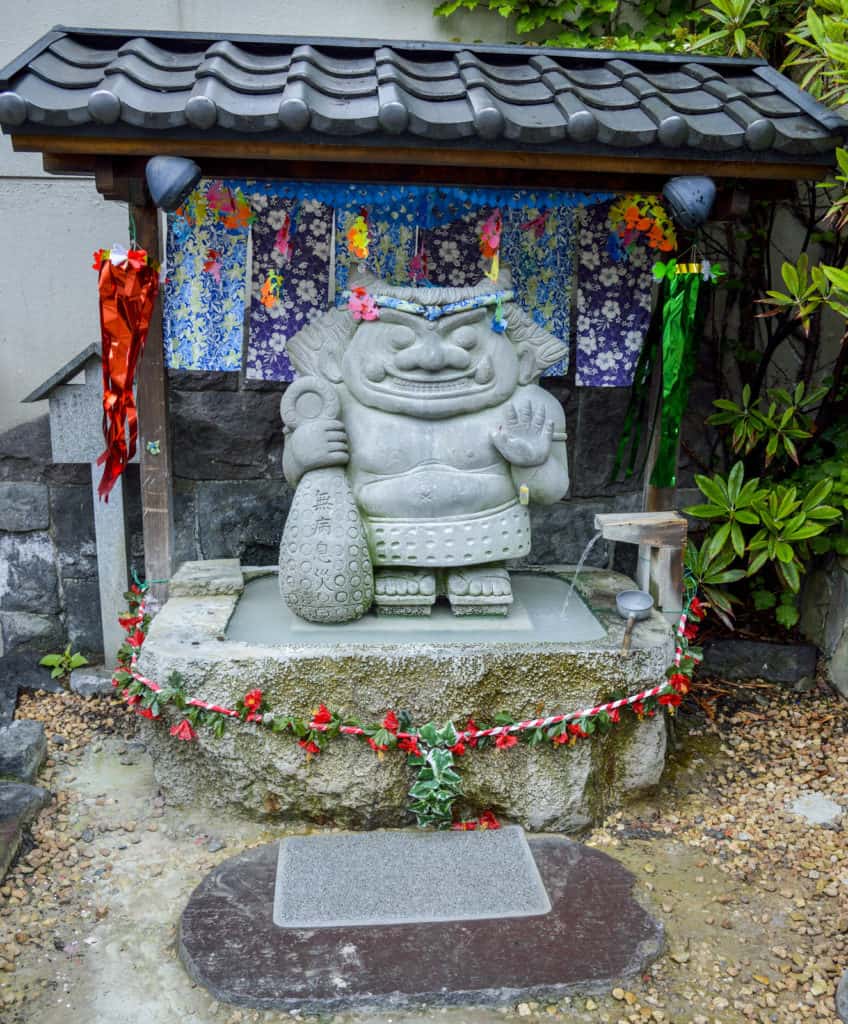
The kanabo was originally used as a weapon by the samurai during feudal Japan. There were not considered a “lesser” weapon than any other, such as a sword or a spear, but were seen as one genuinely effective tool in the arsenal of war.
The kanabo was an extremely large club made of either metal or wood, often measuring up to three feet in length. They were typically swung overhead and used to strike the top of someone’s head, this being the preferred target due to it not being protected with armor.
A kanabo is typically associated with the Oni demons.
Disadvantages of the Kanabo
The main drawbacks of the kanabo are that they are extremely heavy, and so can only be effectively used by extremely strong warriors.
The other disadvantage they face is that they require a large amount of space to be swung effectively. This is a huge drawback on the battlefield, and hard to make work in an army “formation” context.
Kanabo in Japanese mythology
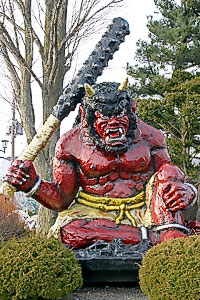
Kanabo weapons are typically associated with the Oni, who are Japanese demons that are seen as extremely strong and brutal fighters.
There is even a saying in Japanese, “鬼に金棒(oni ni kababo like giving a kanabo to an Oni”, which means to take a bad situation and make it worse. Like “adding fuel to the fire”.
A demon carrying a kanabo is mentioned in the 1582 story “Okawara Hojoki”.
A kanabo appears as one of the seven weapons used by the warrior-monk in Saito Musashibou Benkei (武蔵坊弁慶).
Where Are Kanabo Seen Today?
They are most commonly seen in martial arts movies where they are used to break bones and shatter skulls.
The kanabō is a weapon that has been around for centuries. It is now associated with popular culture as well as war.
